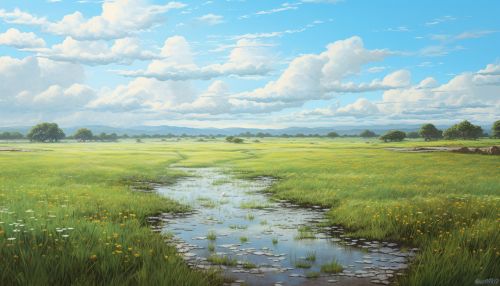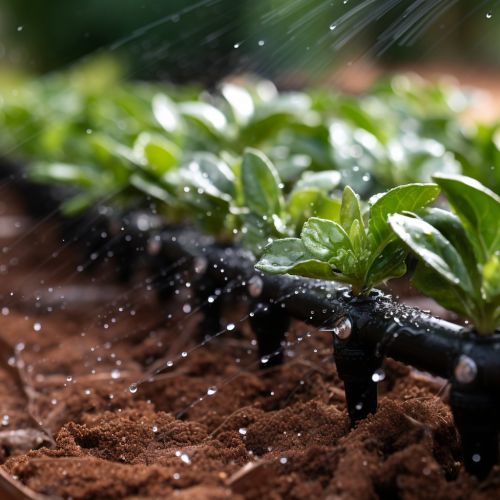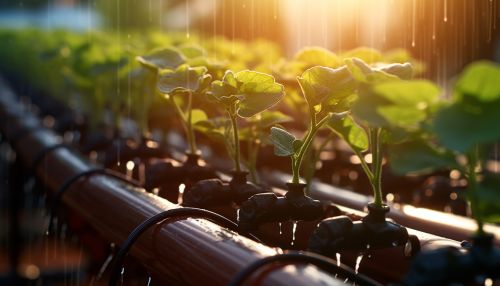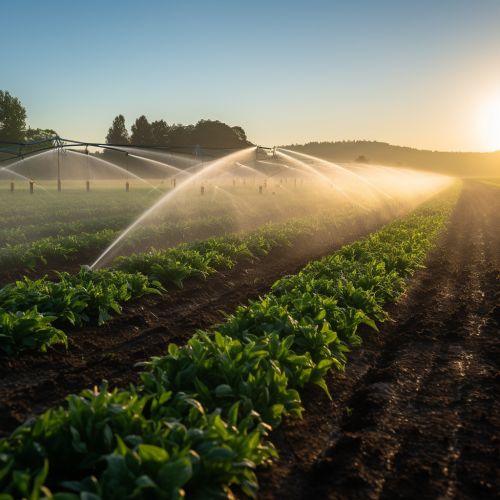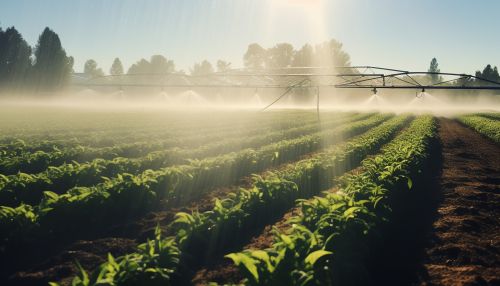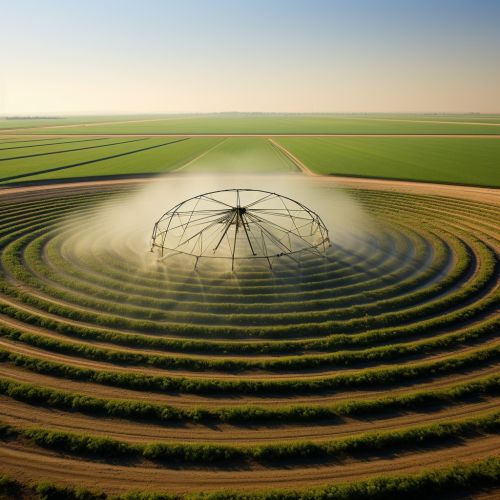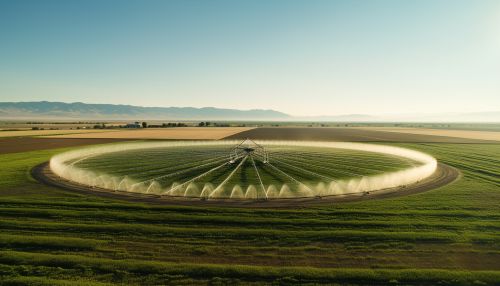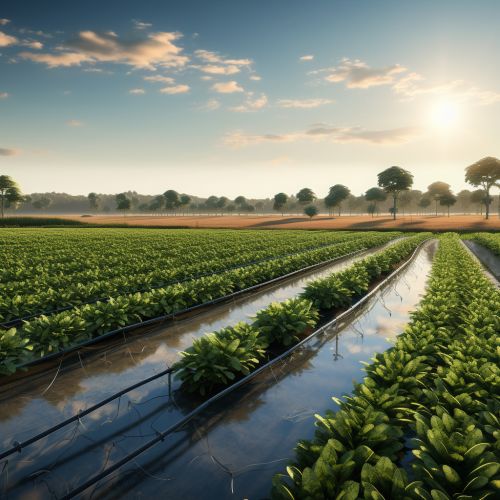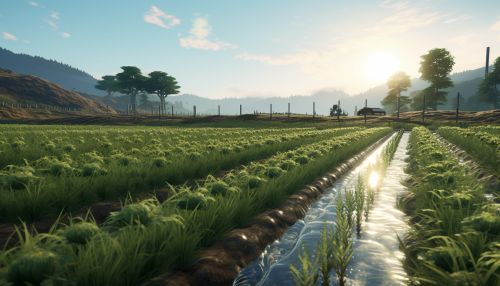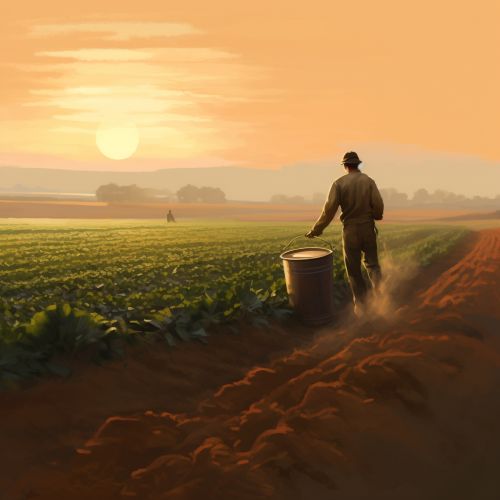Irrigation
Introduction
Irrigation is the artificial application of water to land or soil. It is used to assist in the growing of agricultural crops, maintenance of landscapes, and revegetation of disturbed soils in dry areas and during periods of inadequate rainfall. Additionally, irrigation also has a few other uses in crop production, including frost protection, suppressing weed growth in grain fields and preventing soil consolidation. In contrast, agriculture that relies only on direct rainfall is referred to as rain-fed or dryland farming. Irrigation systems are also used for dust suppression, disposal of sewage, and in mining. Irrigation is often studied together with drainage, which is the natural or artificial removal of surface and sub-surface water from a given area.
History
Irrigation has been a central feature of agriculture for over 5,000 years and is the product of many cultures. Historically, it was the basis for economies and societies across the globe, from Asia to the Southwestern United States.
Types of Irrigation
There are several methods of irrigation. They vary in how the water obtained from the source is distributed within the field. In general, the goal is to supply the entire field uniformly with water, so that each plant has the amount of water it needs, neither too much nor too little.
Surface Irrigation
Surface irrigation is where water is applied and distributed over the soil surface by gravity. It is by far the most common form of irrigation throughout the world and has been practiced in many areas virtually unchanged for thousands of years.
Drip Irrigation
Drip irrigation, also known as trickle irrigation or micro-irrigation, is an irrigation method that saves water and fertilizer by allowing water to drip slowly to the roots of plants, either onto the soil surface or directly onto the root zone, through a network of valves, pipes, tubing, and emitters.
Sprinkler Irrigation
Sprinkler irrigation is a method of applying irrigation water which is similar to natural rainfall. Water is distributed through a system of pipes usually by pumping. It is then sprayed into the air through sprinklers so that it breaks up into small water drops which fall to the ground.
Center Pivot Irrigation
Center pivot irrigation is a method of crop irrigation in which equipment rotates around a pivot and crops are watered with sprinklers.
Sub-irrigation
Sub-irrigation also known as seepage irrigation, is a method of irrigation where water is delivered to the plant root zone. Water is applied from below, distributed through a system of canals, gates, and ditches.
Manual Irrigation
Manual irrigation, which makes use of buckets, watering cans, and other handheld devices, is an old and less efficient method, but it is still important in areas where water resources are scarce or labor is cheap.
Irrigation Management
The goal of irrigation management is to use water in the most effective and efficient way possible. This involves ensuring that the water is applied in a way that maximizes its beneficial use, minimizes its loss to evaporation, and prevents over-irrigation that can lead to water logging and salinization of the soil.
Environmental Impact
Irrigation can have a number of environmental impacts. It can lead to the salinization and waterlogging of soils, as well as the depletion of groundwater resources. It can also cause changes in ecosystems and loss of habitat.
See Also
References

